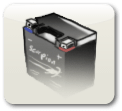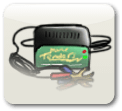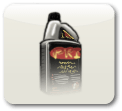Tutorials
Want to learn about internal battery construction? Not sure how solar panels work, but would like to know? What about charging different battery types? What are the differences between AGM, Gel, Flooded, VRLA or Lithium batteries? Just select the icon below that best fits your curiosity, and dig on in! We think we’ve put together a pretty good library here for you to use, so what are you waiting for?
Categories
Battery Articles
 How To Connect Batteries In Series and ParallelWhat is a bank of batteries? No, it’s not some kind of financial battery establishment. A battery bank is the result of joining two or more batteries together for a single application. What does this accomplish? Well, by connecting batteries, you can increase the voltage, amperage, or both. When you need more power, instead of getting yourself a massive super tanker of an RV battery for example, you can construct a battery bank. read more
How To Connect Batteries In Series and ParallelWhat is a bank of batteries? No, it’s not some kind of financial battery establishment. A battery bank is the result of joining two or more batteries together for a single application. What does this accomplish? Well, by connecting batteries, you can increase the voltage, amperage, or both. When you need more power, instead of getting yourself a massive super tanker of an RV battery for example, you can construct a battery bank. read more What is a Battery - A Complete Guide to Battery BasicsIf you’ve done any research on how batteries work or what you should look for when selecting a battery, you’re probably buried in information, some of which is conflicting. At BatteryStuff, we aim to clear that up a bit.
What is a Battery - A Complete Guide to Battery BasicsIf you’ve done any research on how batteries work or what you should look for when selecting a battery, you’re probably buried in information, some of which is conflicting. At BatteryStuff, we aim to clear that up a bit.
You’ve most likely heard the term KISS (Keep It Simple, Stupid). I’m going to attempt to explain how lead acid batteries work and what they need, without burying you with a bunch of needless technical data. I have found that battery data will vary somewhat from manufacturer to manufacturer, so I will do my best to boil that data down. This means I may generalize a bit, while staying true to purpose. read more What Does “20 Amp Hr Rate” Mean?Several years ago when you would go to buy a car, the little tag on the window of a coupe might have read 42 mpg. Of course everyone knew that the only way to make that car get 42 miles to the gallon was to drive at 25 miles per hour on a newly paved level track. So in 2008 when the EPA updated their standards, the ratings all dropped to much more realistic numbers that most light footed people can achieve. Battery ratings are very similar. The faster a battery is drained, the less overall amperage is available. The battery’s AH rating goes down the faster you use it. read more
What Does “20 Amp Hr Rate” Mean?Several years ago when you would go to buy a car, the little tag on the window of a coupe might have read 42 mpg. Of course everyone knew that the only way to make that car get 42 miles to the gallon was to drive at 25 miles per hour on a newly paved level track. So in 2008 when the EPA updated their standards, the ratings all dropped to much more realistic numbers that most light footed people can achieve. Battery ratings are very similar. The faster a battery is drained, the less overall amperage is available. The battery’s AH rating goes down the faster you use it. read more Gel vs AGM: Not Quite the Battle of the Ages, But Nice to KnowMore often than not AGM Batteries are mistakenly identified as Gel Cell Batteries. Both batteries have similar traits; such as being non spillable, deep cycle, may be mounted in any position, low self discharge, safe for use in limited ventilation areas, and may be transported via Air or Ground safely without special handling. read more
Gel vs AGM: Not Quite the Battle of the Ages, But Nice to KnowMore often than not AGM Batteries are mistakenly identified as Gel Cell Batteries. Both batteries have similar traits; such as being non spillable, deep cycle, may be mounted in any position, low self discharge, safe for use in limited ventilation areas, and may be transported via Air or Ground safely without special handling. read more Make the Bad Sulfation Go Away!Sulfation (sul-fay-shun), the number one cause of early battery failures, can be safely reversed, using high frequency electronic pulses. Unlike other pulse type chargers that claim this or similar sounding features, VDC's BatteryMINDers® use a range of high frequencies. This ensures both old and newly formed sulfation will be safely dissolved in the shortest possible time. Using just one fixed frequency may remove some, but not all, especially long established–hardened sulfate crystals. read more
Make the Bad Sulfation Go Away!Sulfation (sul-fay-shun), the number one cause of early battery failures, can be safely reversed, using high frequency electronic pulses. Unlike other pulse type chargers that claim this or similar sounding features, VDC's BatteryMINDers® use a range of high frequencies. This ensures both old and newly formed sulfation will be safely dissolved in the shortest possible time. Using just one fixed frequency may remove some, but not all, especially long established–hardened sulfate crystals. read more How Do Batteries Die? Well, Let Me Tell You...Approximately 50% of premature car battery failures is caused by the loss of water for normal recharging charging due to the lack of maintenance, evaporation from high under hood heat, or overcharging. Approximately 85% of premature deep cycle and starting batteries failures that are not recharged on a regular basis is due to an accumulation of sulfation. read more
How Do Batteries Die? Well, Let Me Tell You...Approximately 50% of premature car battery failures is caused by the loss of water for normal recharging charging due to the lack of maintenance, evaporation from high under hood heat, or overcharging. Approximately 85% of premature deep cycle and starting batteries failures that are not recharged on a regular basis is due to an accumulation of sulfation. read more The Super Secret Workings of a Lead Acid Battery ExplainedA 12-volt motorcycle battery is made up of a plastic case containing six cells. Each cell is made up of a set of positive and negative plates immersed in a dilute sulfuric acid solution known as electrolyte, and each cell has a voltage of around 2.1 volts when fully charged. The six cells are connected together to produce a fully charged battery of about 12.6 volts. That's great, but how does sticking lead plates into sulfuric acid produce electricity? read more
The Super Secret Workings of a Lead Acid Battery ExplainedA 12-volt motorcycle battery is made up of a plastic case containing six cells. Each cell is made up of a set of positive and negative plates immersed in a dilute sulfuric acid solution known as electrolyte, and each cell has a voltage of around 2.1 volts when fully charged. The six cells are connected together to produce a fully charged battery of about 12.6 volts. That's great, but how does sticking lead plates into sulfuric acid produce electricity? read more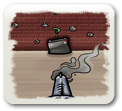 Troubleshooting a BatteryOne of the facts of life is that batteries fail. Some take years, but eventually they will all bite the dust. However, there are so many factors in electrical systems that can go wrong, that often times the battery takes the blame for other component's problems. The easiest and fastest thing to check for problems is the battery. Here is a simple test that can tell you a lot about what is going on inside a battery, and whether it is good or not. This is not meant to test anything other than the battery, but it is a great place to start if you are having electrical problems. read more
Troubleshooting a BatteryOne of the facts of life is that batteries fail. Some take years, but eventually they will all bite the dust. However, there are so many factors in electrical systems that can go wrong, that often times the battery takes the blame for other component's problems. The easiest and fastest thing to check for problems is the battery. Here is a simple test that can tell you a lot about what is going on inside a battery, and whether it is good or not. This is not meant to test anything other than the battery, but it is a great place to start if you are having electrical problems. read more Lithium Iron FAQShorai LFX batteries contain proprietary eXtreme-Rate Lithium Iron prismatic cells (chemistry LiFePO4). Shorai LFX batteries contain no poisonous lead, no acid, and do not create gasses during charge, as traditional Lead-Acid batteries do. Compared to lead-acid, Shorai LFX lithium are also extremely light, have much lower self-discharge, do not sulfate, and are environmentally friendly. read more
Lithium Iron FAQShorai LFX batteries contain proprietary eXtreme-Rate Lithium Iron prismatic cells (chemistry LiFePO4). Shorai LFX batteries contain no poisonous lead, no acid, and do not create gasses during charge, as traditional Lead-Acid batteries do. Compared to lead-acid, Shorai LFX lithium are also extremely light, have much lower self-discharge, do not sulfate, and are environmentally friendly. read more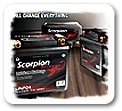 Scorpion Stinger Lithium Series BatteriesA couple months ago we received a new battery line from Scorpion. These new batteries are an example of the latest and greatest in battery technology, and represent a giant leap forward in Powersports starting applications. We’ve actually been secretly testing these batteries for... read more
Scorpion Stinger Lithium Series BatteriesA couple months ago we received a new battery line from Scorpion. These new batteries are an example of the latest and greatest in battery technology, and represent a giant leap forward in Powersports starting applications. We’ve actually been secretly testing these batteries for... read more Cold Weather Starting Tips for Motorcycle & ATV Lithium BatteriesCold weather doesn’t stop me from riding and it shouldn’t stop you either! In general LiFePO4 (Lithium Iron) motorcycle and ATV batteries are a moderate climate power source, but they can be used in some cold weather conditions with a little bit of knowledge. Let’s take a look at LiFePO4 powersport batteries and... read more
Cold Weather Starting Tips for Motorcycle & ATV Lithium BatteriesCold weather doesn’t stop me from riding and it shouldn’t stop you either! In general LiFePO4 (Lithium Iron) motorcycle and ATV batteries are a moderate climate power source, but they can be used in some cold weather conditions with a little bit of knowledge. Let’s take a look at LiFePO4 powersport batteries and... read more Lithium Battery OverviewLithium Based batteries are quickly becoming a reasonable replacement for the 150 year old technology of Lead-Acid batteries. In applications where weight is a consideration, Lithium batteries are among the lightest options available. In recent years Lithium has become available in several chemistries; Lithium-Ion, Lithium Iron Phosphate, Lithium Polymer and a few more exotic variations. read more
Lithium Battery OverviewLithium Based batteries are quickly becoming a reasonable replacement for the 150 year old technology of Lead-Acid batteries. In applications where weight is a consideration, Lithium batteries are among the lightest options available. In recent years Lithium has become available in several chemistries; Lithium-Ion, Lithium Iron Phosphate, Lithium Polymer and a few more exotic variations. read more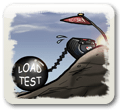 Shorai LFX Lithium Iron Phosphate Batteries Abuse TestLithium Iron Phosphate. At first thought, it sounds like a vitamin supplement that I should be taking to calm my nerves and keep the doctor away. While it won’t calm the nerves or help the joints, Lithium Iron Phosphate is actually a battery chemistry that allows for superior energy storage in a much lighter than lead package. read more
Shorai LFX Lithium Iron Phosphate Batteries Abuse TestLithium Iron Phosphate. At first thought, it sounds like a vitamin supplement that I should be taking to calm my nerves and keep the doctor away. While it won’t calm the nerves or help the joints, Lithium Iron Phosphate is actually a battery chemistry that allows for superior energy storage in a much lighter than lead package. read more What The Heck is a NiCd Battery?If this is not your first stop in the NiCd information trail I am sure the information that you have read, heard, or found on the internet is just about overwhelming. In this tutorial we will do our best at keeping is simple, accurate, and to the point. If you have questions that are not addressed, please let us know and we hopefully be able to help. read more
What The Heck is a NiCd Battery?If this is not your first stop in the NiCd information trail I am sure the information that you have read, heard, or found on the internet is just about overwhelming. In this tutorial we will do our best at keeping is simple, accurate, and to the point. If you have questions that are not addressed, please let us know and we hopefully be able to help. read more Proper Care and Feeding: NiMH Battery FAQsWhat does NiMH stand for?
Proper Care and Feeding: NiMH Battery FAQsWhat does NiMH stand for?
The material is Nickel Metal Hydride (NiMH) which has many advantages over other battery construction materials.
What is meant by battery memory?
Older generation and batteries with other chemical make-up were subject to a memory effect. This is when a battery must be fully drained before recharge or their capacity is reduced. The New Generation of NIMH batteries do not develop a memory effect and can be recharged at anytime during usage cycle. When uncertain about battery charge level or condition, recharge it. read more What Do I Do With My Old Dead Battery?When you see a price for a new battery at BatteryStuff.com, there is no core charge. What you see is what you get. Please do not send us your old batteries by mail. Not only is it expensive, but it may be considered hazardous. However, if you stop by any of our locations, you can drop off your old battery and we'll gladly take it off your hands. Free of charge. Any business that sells batteries will also accept them for battery recycling. read more
What Do I Do With My Old Dead Battery?When you see a price for a new battery at BatteryStuff.com, there is no core charge. What you see is what you get. Please do not send us your old batteries by mail. Not only is it expensive, but it may be considered hazardous. However, if you stop by any of our locations, you can drop off your old battery and we'll gladly take it off your hands. Free of charge. Any business that sells batteries will also accept them for battery recycling. read more Peukert’s Law | A Nerd’s Attempt to Explain Battery CapacityWhen I first entered the arena of lead acid batteries and their neurotic tendencies, it was presented to me that the easiest way to rate and understand how long a lead-acid battery would last, would be to use the AH (Amp Hour) rating that is so often designated to them. I was told that if a battery was rated at 100AH, then that was more or less indicative that it would last either 100 hours under a 1 amp load, or 1 hour under a 100 amp load. It soon became apparent that this notion of order was false; everything previously understood had been a lie. read more
Peukert’s Law | A Nerd’s Attempt to Explain Battery CapacityWhen I first entered the arena of lead acid batteries and their neurotic tendencies, it was presented to me that the easiest way to rate and understand how long a lead-acid battery would last, would be to use the AH (Amp Hour) rating that is so often designated to them. I was told that if a battery was rated at 100AH, then that was more or less indicative that it would last either 100 hours under a 1 amp load, or 1 hour under a 100 amp load. It soon became apparent that this notion of order was false; everything previously understood had been a lie. read more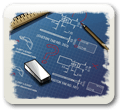 What is the Difference Between the Terminal Type F1 and F2?The SLA batteries we sell, up to 12 volts 15 Amp Hours (AH), commonly use the faston tabs as the terminal type. The F1 and the F2 are the terms we use to refer to the terminals. At first glance, they look very similar. These are flat blade type terminals which stick up at an angle from the top or side of the battery. These terminal types are designed to be attached with a push-on spade insert, either for your application or for charging. The F1 terminal is thinner, and the F2 is wider. read more
What is the Difference Between the Terminal Type F1 and F2?The SLA batteries we sell, up to 12 volts 15 Amp Hours (AH), commonly use the faston tabs as the terminal type. The F1 and the F2 are the terms we use to refer to the terminals. At first glance, they look very similar. These are flat blade type terminals which stick up at an angle from the top or side of the battery. These terminal types are designed to be attached with a push-on spade insert, either for your application or for charging. The F1 terminal is thinner, and the F2 is wider. read more 5 Battery Types Explained - Flooded, Sealed, AGM, Gel, & LithiumWith all the different kinds of batteries on the market, it can be difficult to choose the right type for your application. Read on for definitions of the 5 most common types. read more
5 Battery Types Explained - Flooded, Sealed, AGM, Gel, & LithiumWith all the different kinds of batteries on the market, it can be difficult to choose the right type for your application. Read on for definitions of the 5 most common types. read more Motorcycle Battery Size Chart & Motorcycle Cross-Reference ChartThe easiest method to find the correct motorcycle or ATV battery is to use our battery finder for your application. But what happens when your application isn't listed, or the application is custom-built? We have compiled a few charts that list all our sealed AGM powersport batteries. You can use this to compare your existing battery part number or to find the correct battery based on the battery box dimensions. read more
Motorcycle Battery Size Chart & Motorcycle Cross-Reference ChartThe easiest method to find the correct motorcycle or ATV battery is to use our battery finder for your application. But what happens when your application isn't listed, or the application is custom-built? We have compiled a few charts that list all our sealed AGM powersport batteries. You can use this to compare your existing battery part number or to find the correct battery based on the battery box dimensions. read more How to Tell if Your Motorcycle Battery is Bad: 5 SignsOur Tech department answers questions nearly every day about the signs of failing batteries. This article covers the top 5 reasons a motorcycle battery goes bad. read more
How to Tell if Your Motorcycle Battery is Bad: 5 SignsOur Tech department answers questions nearly every day about the signs of failing batteries. This article covers the top 5 reasons a motorcycle battery goes bad. read more The Different Types of Motorcycle batteries: The Pros, Cons, and ComparisonsThere are just two main types of motorcycle batteries sold in the USA. However, that gets muddied a bit when you toss in the sub-variants. This article summarizes all these variants, so you know what you have and what to get. read more
The Different Types of Motorcycle batteries: The Pros, Cons, and ComparisonsThere are just two main types of motorcycle batteries sold in the USA. However, that gets muddied a bit when you toss in the sub-variants. This article summarizes all these variants, so you know what you have and what to get. read more How to Test a Motorcycle BatteryHaving a motorcycle battery issue? This test will help determine if the battery is faulty or if the problem persists elsewhere. read more
How to Test a Motorcycle BatteryHaving a motorcycle battery issue? This test will help determine if the battery is faulty or if the problem persists elsewhere. read more How to Remove and Install a Motorcycle BatteryReplacing a motorcycle battery is an easy job in most cases, but there are a few potential pitfalls. Here's how to do it. read more
How to Remove and Install a Motorcycle BatteryReplacing a motorcycle battery is an easy job in most cases, but there are a few potential pitfalls. Here's how to do it. read more
Solar Articles
 Solar Systems the Right WayThere is quite a bit of info needed to correctly size your solar power backup system. We try to help answer these solar power questions and more daily here at BatteryStuff.com. Because these types of questions are so common, we have created an easy path that guides you with a few easy steps. Please refer to our article for further info. read more
Solar Systems the Right WayThere is quite a bit of info needed to correctly size your solar power backup system. We try to help answer these solar power questions and more daily here at BatteryStuff.com. Because these types of questions are so common, we have created an easy path that guides you with a few easy steps. Please refer to our article for further info. read more What Size Solar Panel Do I need?We created a solar calculator to assist with sizing your panels and batteries. Keep in mind that this is only a calculator, and it will directly reflect whatever you input into the fields. If your base calculations are off by even a little bit, the results reflected can be skewed by quite a bit, so view this as a guide and not an absolute. read more
What Size Solar Panel Do I need?We created a solar calculator to assist with sizing your panels and batteries. Keep in mind that this is only a calculator, and it will directly reflect whatever you input into the fields. If your base calculations are off by even a little bit, the results reflected can be skewed by quite a bit, so view this as a guide and not an absolute. read more Solar Info: The Down Low on Everything Up HighRain or shine we get a huge number of calls about solar power each day. We’ll attempt to answer the questions asked most often so we can save you a phone call. read more
Solar Info: The Down Low on Everything Up HighRain or shine we get a huge number of calls about solar power each day. We’ll attempt to answer the questions asked most often so we can save you a phone call. read more Solar Panel Installation TipsBatteryStuff Solar Panels use high quality Poly-Crystalline solar cells. Diodes contained within the junction box insure reliable operation and no drain during low light conditions. Anodized aluminum frames add strength and durability to the modules. Includes pre-drilled mounting holes. The modules have a 20-year, 80% power output warranty. read more
Solar Panel Installation TipsBatteryStuff Solar Panels use high quality Poly-Crystalline solar cells. Diodes contained within the junction box insure reliable operation and no drain during low light conditions. Anodized aluminum frames add strength and durability to the modules. Includes pre-drilled mounting holes. The modules have a 20-year, 80% power output warranty. read more Can I charge my trolling motor batteries with a solar panel?Adding solar panels to a trolling motor battery pack can be beneficial in certain circumstances. BatteryStuff.com covers three scenarios that customers typically ask us about solar charging their trolling motor battery pack. read more
Can I charge my trolling motor batteries with a solar panel?Adding solar panels to a trolling motor battery pack can be beneficial in certain circumstances. BatteryStuff.com covers three scenarios that customers typically ask us about solar charging their trolling motor battery pack. read more Can I Run my Device Directly from Solar Power?We get asked this question a lot: Can I run (enter device here) directly off solar energy? The simple answer is this: Yes and no. Learn more... read more
Can I Run my Device Directly from Solar Power?We get asked this question a lot: Can I run (enter device here) directly off solar energy? The simple answer is this: Yes and no. Learn more... read more
Battery Charging Articles
 What Size Battery Charger Do I Need?There are certainly other factors in selecting a battery charger, and it would be difficult to cover them all, but here a few. Input voltage, generally for use in foreign countries. Exposure to elements, i.e. would you benefit from a waterproof charger? Perhaps you will need a charger that doubles as a power supply for an RV or some other application. Often people will need to charge multiple batteries simultaneously, so multiple bank chargers may be needed. read more
What Size Battery Charger Do I Need?There are certainly other factors in selecting a battery charger, and it would be difficult to cover them all, but here a few. Input voltage, generally for use in foreign countries. Exposure to elements, i.e. would you benefit from a waterproof charger? Perhaps you will need a charger that doubles as a power supply for an RV or some other application. Often people will need to charge multiple batteries simultaneously, so multiple bank chargers may be needed. read more Make the Bad Sulfation Go Away!Sulfation (sul-fay-shun), the number one cause of early battery failures, can be safely reversed, using high frequency electronic pulses. Unlike other pulse type chargers that claim this or similar sounding features, VDC's BatteryMINDers® use a range of high frequencies. This ensures both old and newly formed sulfation will be safely dissolved in the shortest possible time. Using just one fixed frequency may remove some, but not all, especially long established–hardened sulfate crystals. read more
Make the Bad Sulfation Go Away!Sulfation (sul-fay-shun), the number one cause of early battery failures, can be safely reversed, using high frequency electronic pulses. Unlike other pulse type chargers that claim this or similar sounding features, VDC's BatteryMINDers® use a range of high frequencies. This ensures both old and newly formed sulfation will be safely dissolved in the shortest possible time. Using just one fixed frequency may remove some, but not all, especially long established–hardened sulfate crystals. read more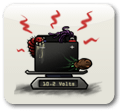 Testing Your Battery for Parasitic LoadTo check if something is draining your battery while your bike is turned off you need to test for current, not volts. To do so, you may need to use a multimeter. Do not start the engine of your vehicle when testing for parasitic drain. read more
Testing Your Battery for Parasitic LoadTo check if something is draining your battery while your bike is turned off you need to test for current, not volts. To do so, you may need to use a multimeter. Do not start the engine of your vehicle when testing for parasitic drain. read more What You Need to Know to Keep Boat Batteries ChargedThere’s nothing worse than getting out in the middle of the lake and having your boat’s battery die. Been there. Done that. Don’t want to do it again. Especially not with a boat full of upset kids! To help you avoid a scene of mutiny, we’re giving you the basics of what you need to know and do to keep your boat batteries charged. In this post, we’re going to focus on AGM and Gel boat batteries and explain the differences and benefits. read more
What You Need to Know to Keep Boat Batteries ChargedThere’s nothing worse than getting out in the middle of the lake and having your boat’s battery die. Been there. Done that. Don’t want to do it again. Especially not with a boat full of upset kids! To help you avoid a scene of mutiny, we’re giving you the basics of what you need to know and do to keep your boat batteries charged. In this post, we’re going to focus on AGM and Gel boat batteries and explain the differences and benefits. read more How to Charge a Car Battery without a Charger?Many of our customers are looking for a way to maintain a car’s battery that isn’t driven that often. In this article, we show you a few methods of how to charge a battery without a charger! read more
How to Charge a Car Battery without a Charger?Many of our customers are looking for a way to maintain a car’s battery that isn’t driven that often. In this article, we show you a few methods of how to charge a battery without a charger! read more Everything You Need to Know About Charging a Motorcycle BatteryYou are all set to go for a ride this weekend, but you’ve somehow allowed your motorcycle or ATV battery to become discharged. We've answered some FAQs about the do's and don'ts for charging a dead powersport battery. read more
Everything You Need to Know About Charging a Motorcycle BatteryYou are all set to go for a ride this weekend, but you’ve somehow allowed your motorcycle or ATV battery to become discharged. We've answered some FAQs about the do's and don'ts for charging a dead powersport battery. read more How do I know what golf cart battery charger I need?Discover how to choose the right golf cart battery charger for your flooded, AGM, gel, or lithium batteries to ensure optimal performance and safety. read more
How do I know what golf cart battery charger I need?Discover how to choose the right golf cart battery charger for your flooded, AGM, gel, or lithium batteries to ensure optimal performance and safety. read more
Miscellaneous Articles
 Fuel Treatments. Why Bother?More and more lately there has been a lot of talk about long term fuel storage and preservation. There are many situations where fuel storage and restoration need to be considered, like when equipment is put into storage more than a couple weeks, such as RV's, motorcycles, boats, classic cars, etc. read more
Fuel Treatments. Why Bother?More and more lately there has been a lot of talk about long term fuel storage and preservation. There are many situations where fuel storage and restoration need to be considered, like when equipment is put into storage more than a couple weeks, such as RV's, motorcycles, boats, classic cars, etc. read more OK, Who's Got Gas? Fuel, That Is.The first thing you must understand about today's fuels is that the environment is the first consideration and the engine performance comes second. The Environmental Protection Agency (EPA) plays a heavy hand in today's Gasoline and Diesel fuels development. read more
OK, Who's Got Gas? Fuel, That Is.The first thing you must understand about today's fuels is that the environment is the first consideration and the engine performance comes second. The Environmental Protection Agency (EPA) plays a heavy hand in today's Gasoline and Diesel fuels development. read more PRI-G FAQ and Dramatic BenefitsBy comparison, gasoline today is initially much cleaner than gasoline sold 10 or 20 years ago when it is first produced. However, today’s fuels are less stable today because they are produced through cracking processes versus the less efficient “straight-run” processes used years ago. As a result, today’s fuels deteriorate at much faster rates - resulting in excessive carbon build-up in your engine. Given the varying length of time it takes for fuel to be consumed after refining, it is wise to freshen fuels every tank full with PRI-G to ensure maximum combustion and performance. read more
PRI-G FAQ and Dramatic BenefitsBy comparison, gasoline today is initially much cleaner than gasoline sold 10 or 20 years ago when it is first produced. However, today’s fuels are less stable today because they are produced through cracking processes versus the less efficient “straight-run” processes used years ago. As a result, today’s fuels deteriorate at much faster rates - resulting in excessive carbon build-up in your engine. Given the varying length of time it takes for fuel to be consumed after refining, it is wise to freshen fuels every tank full with PRI-G to ensure maximum combustion and performance. read more Cooling TutorialYears ago environmental required cleaner burning engines and thus engine operating temperatures were raised in order to reduce exhaust emissions. Today's engines run on the borderline of overheating.
Cooling TutorialYears ago environmental required cleaner burning engines and thus engine operating temperatures were raised in order to reduce exhaust emissions. Today's engines run on the borderline of overheating.
We have found that many people neglect their cooling systems until it becomes a costly problem. A properly maintained cooling system will provide excellent service for many years. There is more to maintenance than just changing the antifreeze every two years. Little things like replacing hoses and keeping the air flow clean and unobstructed are also very important. read more Lubrication TutorialThere are a lot of options available when it comes to lubricants. We have mineral based (oil that comes from the ground), blends, a combination of mineral and synthetic, and full synthetic. We use these lubricants in engines, transmissions, gear cases, and hydraulics. read more
Lubrication TutorialThere are a lot of options available when it comes to lubricants. We have mineral based (oil that comes from the ground), blends, a combination of mineral and synthetic, and full synthetic. We use these lubricants in engines, transmissions, gear cases, and hydraulics. read more PRI-D FAQ and Dramatic BenefitsGiven the fact that literally thousands of fuel additives are offered on the market, engine manufacturers have no way of monitoring or testing the claims of so many products - making it difficult to determine specific products that are safe to use. However, PRI chemistry does not alter any fuel specifications issued by engine manufacturers - specifications by which manufacturers judge whether or not a particular fuel affects safe engine operation. PRI has been safely used in thousands of engine types. read more
PRI-D FAQ and Dramatic BenefitsGiven the fact that literally thousands of fuel additives are offered on the market, engine manufacturers have no way of monitoring or testing the claims of so many products - making it difficult to determine specific products that are safe to use. However, PRI chemistry does not alter any fuel specifications issued by engine manufacturers - specifications by which manufacturers judge whether or not a particular fuel affects safe engine operation. PRI has been safely used in thousands of engine types. read more Cost Benefit RatioBecause of their initial industrial intent, all of the liquid chemistry products we offer are very concentrated. We have found most ‘off the shelf’ automotive consumer products are diluted for retail sales. Can you tell which one will give you more value for you money? read more
Cost Benefit RatioBecause of their initial industrial intent, all of the liquid chemistry products we offer are very concentrated. We have found most ‘off the shelf’ automotive consumer products are diluted for retail sales. Can you tell which one will give you more value for you money? read more Sponsoring The Funky ChickenThis year, we are proud to be sponsoring a race that's held every year at the Big K Ranch in Elkton, Oregon. This is round #5 of the AMA Western Hare Scrambles, hosted by Emerald Trail Riders Association [ETRA]. The event will take place on June 16-17, 2012. Saturday will consist of races from the AMA National Youth Hare Scrambles, plus the B and C adult classes. The rest of the AMA National Hare Scrambles and the Pro and A classes will tear it up on Sunday. The best racers from all over the West Coast will be there, with over 300 racers expected. read more
Sponsoring The Funky ChickenThis year, we are proud to be sponsoring a race that's held every year at the Big K Ranch in Elkton, Oregon. This is round #5 of the AMA Western Hare Scrambles, hosted by Emerald Trail Riders Association [ETRA]. The event will take place on June 16-17, 2012. Saturday will consist of races from the AMA National Youth Hare Scrambles, plus the B and C adult classes. The rest of the AMA National Hare Scrambles and the Pro and A classes will tear it up on Sunday. The best racers from all over the West Coast will be there, with over 300 racers expected. read more
Articles
 5 Battery Types Explained - Flooded, Sealed, AGM, Gel, & LithiumWith all the different kinds of batteries on the market, it can be difficult to choose the right type for your application. Read on for definitions of the 5 most common types. read more
5 Battery Types Explained - Flooded, Sealed, AGM, Gel, & LithiumWith all the different kinds of batteries on the market, it can be difficult to choose the right type for your application. Read on for definitions of the 5 most common types. read more



